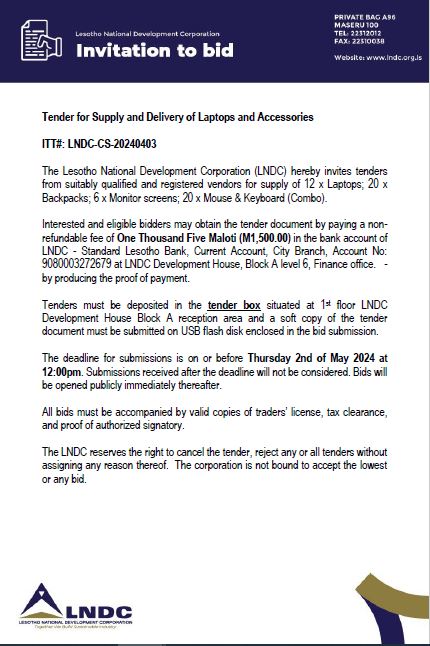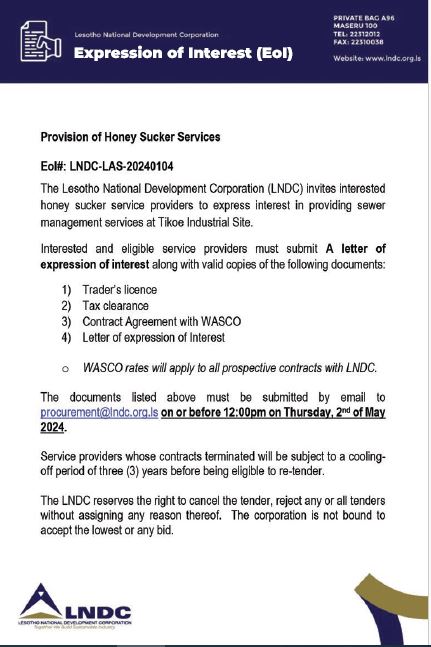Ntsoaki Motaung
The Central Bank of Lesotho (CBL) has hailed a glimpse of improvement in the Global Labour Market owing to relaxed lockdown restrictions in the first quarter of the year.
The CBL’s updated quarterly report on price development points the positive inflation rates after the ravaging Covid-19 vaccination efforts were made to return to normality.
According to CBL, positive inflation rates were reported in the world’s economic giants; United States of America, United Kingdom, Euro Area, Japan, Republic of China, India and the Republic of South Africa in the second quarter of 2021, alluding that the monetary policy stance across advanced economies remained accommodative with policy rates in the United States, the Euro Area and United Kingdom kept close to zero.
The CBL report indicated that global financial markets reflected rising volatility and mounting global risk sentiment due to the upsurge of cases of Covid-19 variants and talks of possible unwinding of stimulus in some key jurisdictions, yielding in emerging markets, especially the neighbouring South Africa, barely changed and remained subdued on the short and long end.
This is despite rising global risk appetite that includes the recent lootings in KwaZulu-Natal and Gauteng provinces, coupled with lockdowns and the spread of Covid-19 variants have led to investors being net sellers of South African assets. The report states that the South African rand is expected to continue to show resilience, with likely downside risks in the medium term, on the back of existing structural impediments,
“The CBL’s Composite Indicator of Economic Activity (CIEA) reflects that economic activity improved by 5.5 per cent in May, compared with the 3.3 per cent growth recorded in the preceding month. This was mainly as a result of loosening of COVID-19 induced restrictions in the review period. The domestic economic recovery remains largely conditional on developments related to potentially stronger and prolonged rise in virus infections, COVID-19 containment measures and the rollout of vaccines. Continued spikes in infection rates could bode negatively for growth and general economic recovery in the short to medium term,†the report reads.
According to the CBL in the first quarter of 2021, domestic labour market conditions remained weak in all the three sectors that are monitored by the Bank. This was primarily on account of Covid-19 lockdown restrictions. The rate of inflation, as measured by the year-on-year percentage change in consumer price index (CPI), was 6.0 per cent in June 2021, compared to 6.9 per cent in May of the same year. The largest contributors to the June inflation rate include food; electricity, gas and other fuels; and transport subcomponents.
“The broad measure of money supply (M2) declined by 3.3 per cent in the second quarter of 2021, relative to a 1.3 per cent decline in the first quarter. The decrease was due to a contraction of 2.1 per cent in Net Foreign Assets, as well as a 4.4 per cent fall in Net Domestic Assets. Private sector credit extended by banks increased by 1.8 per cent in June 2021 compared to a moderate decline of 0.1 per cent in the quarter ending March 2021. Loans and advances extended to business enterprises increased by a marginal 0.2 per cent in the quarter under review, relative to a 1.1 per cent growth in the preceding quarter. Similarly, total credit granted to households rose by 2.3 per cent in the quarter ending June, relative to a 0.5 per cent in the quarter ending March.â€
“The current account recorded a surplus equivalent to 1.1 per cent of Gross Domestic Product (GDP) in the first quarter of 2021, from a deficit of 1.8 per cent of GDP in the preceding quarter. The improvement in the current account was driven mainly by the performance of the trade and income accounts. Consequently, the gross international reserves, as measured in months of import cover, rose to 4.5 months in the first quarter of 2021, compared to 4.3 months in the previous quarter. The Government budgetary operations recorded a fiscal deficit equivalent to 9.0 per cent of GDP during the first quarter of 2021, as opposed to a revised fiscal surplus of 12.9 per cent of GDP in the last quarter of 2020,†the document reads.
The CBL stated that although some signs of recovery are starting to emerge, global economic growth prospects remain uneven and clouded by the uncertainty surrounding possible resurgence of the virus and emergence of new variants and the roll-out of vaccines at the country level. Domestically, any prospects for growth have to be weighed against existing uncertainties. Risks to the domestic economic outlook include the possible spread of Covid-19 and the effectiveness of the infection control measures, exposure to international economic developments, domestic structural rigidities and policy uncertainty.
“Having considered the Net International Reserve (NIR) developments and outlook, regional inflation and interest rate outlook, domestic economic conditions and the global economic outlook, the MPC decided to decrease the NIR target floor from US$800 million to US$780 million. At this level, the NIR target remains consistent with the maintenance of the exchange rate peg between the loti and the South African rand. Maintain the CBL rate at a rate of 3.50 per cent per annum. The rate, set at this level, will ensure that the domestic cost of funds remains aligned with the rest of the region. The Committee will continue to monitor the global developments and their likely impact on domestic macroeconomic conditions, especially the CBL net international reserves (NIR), with the aim of taking corrective action when needed,†the document reads.


![Screenshot_20210804-201243_Word_Office_Reader[1]](https://newsdayonline.co.ls/wp-content/uploads/2021/08/Screenshot_20210804-201243_Word_Office_Reader1.jpg)


